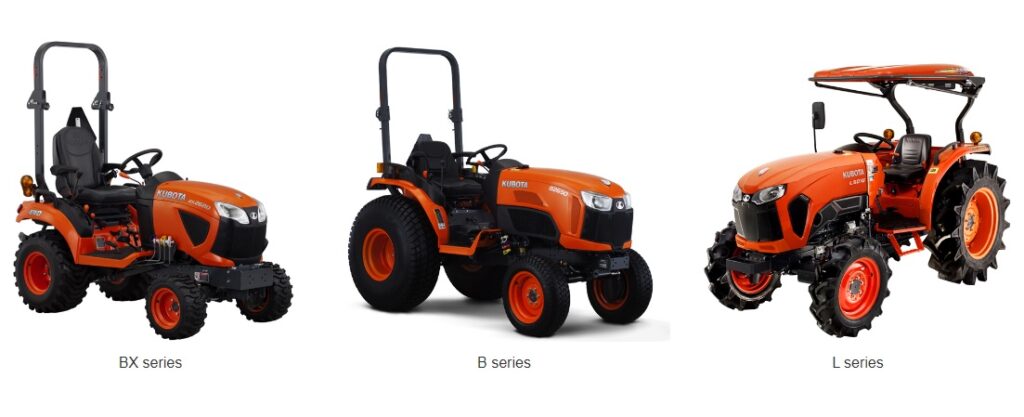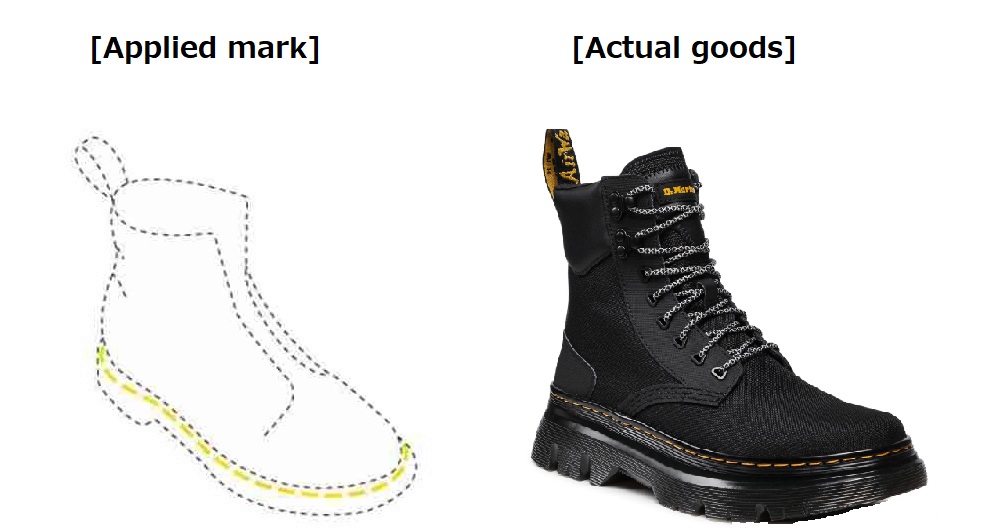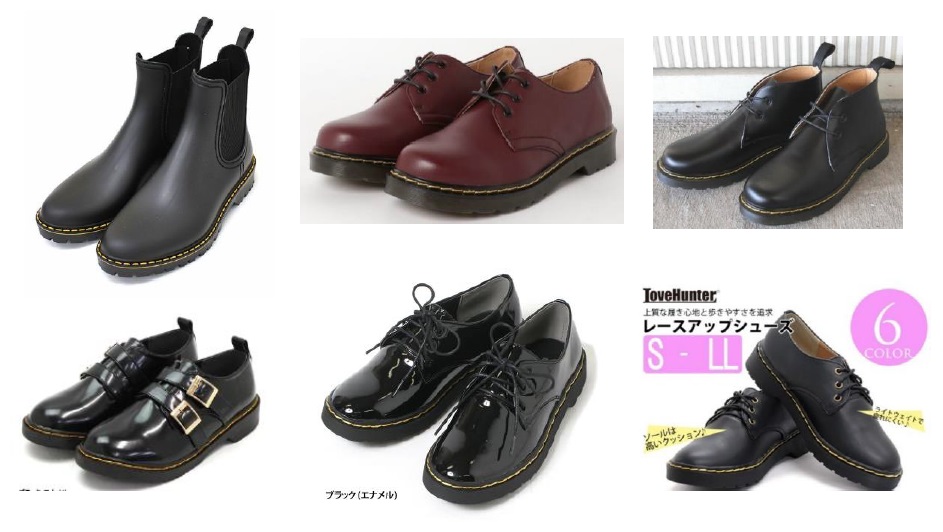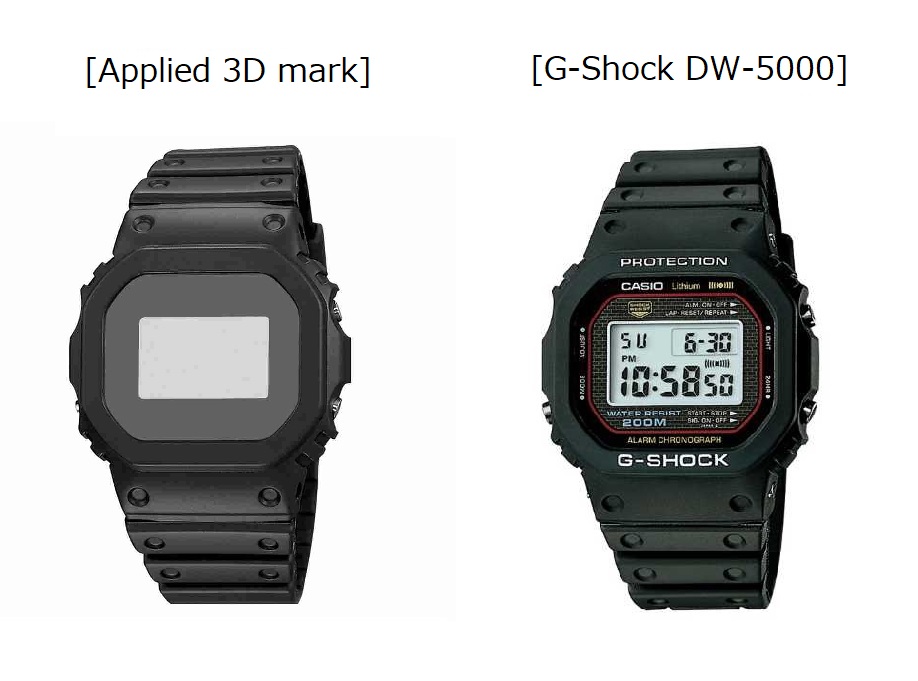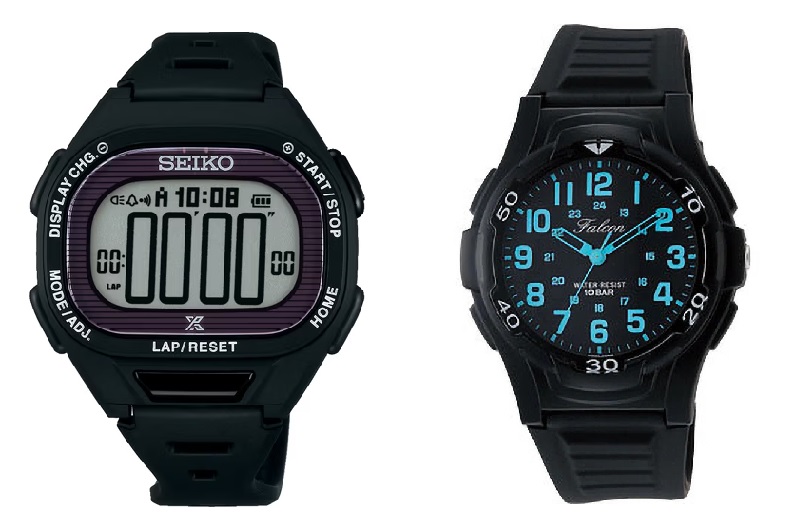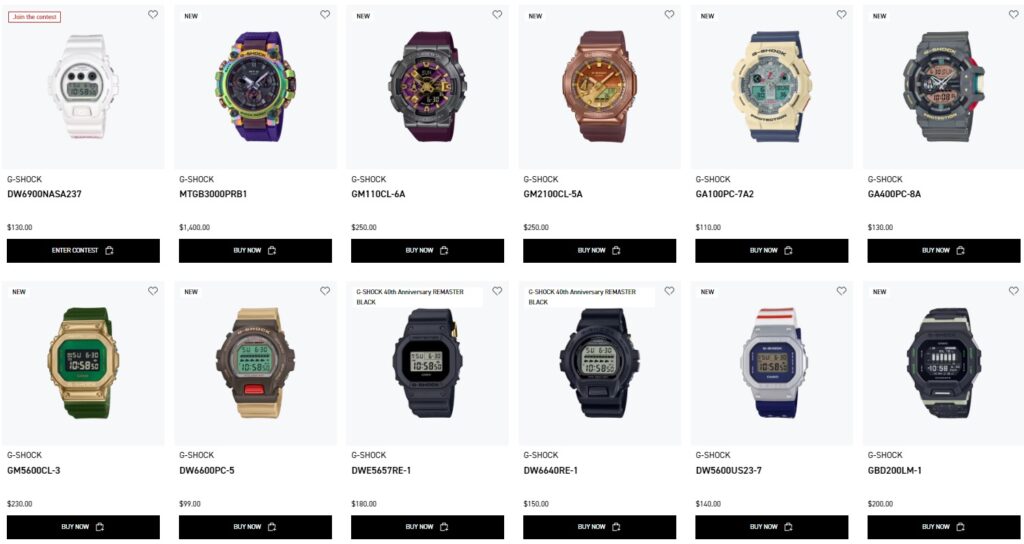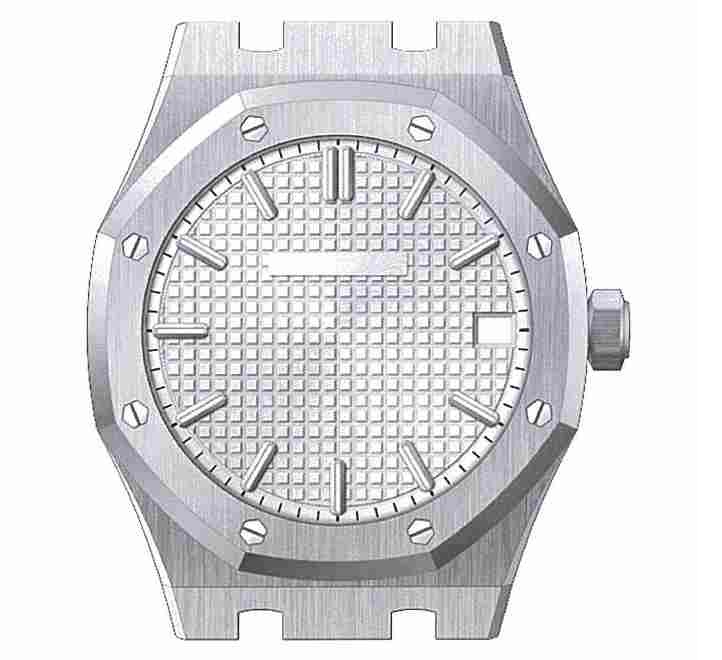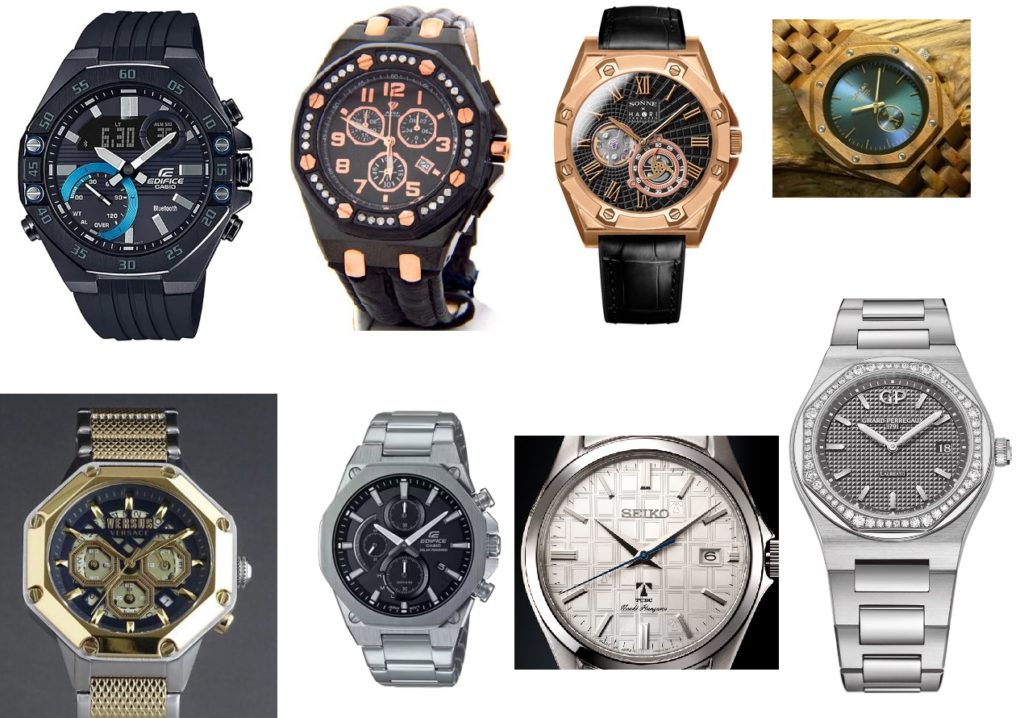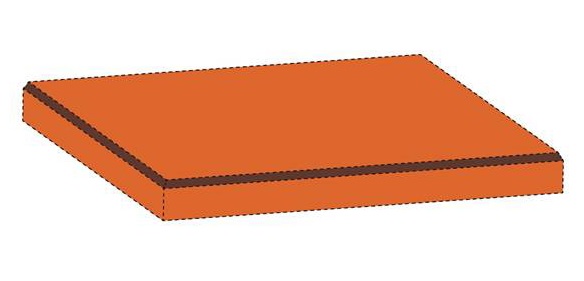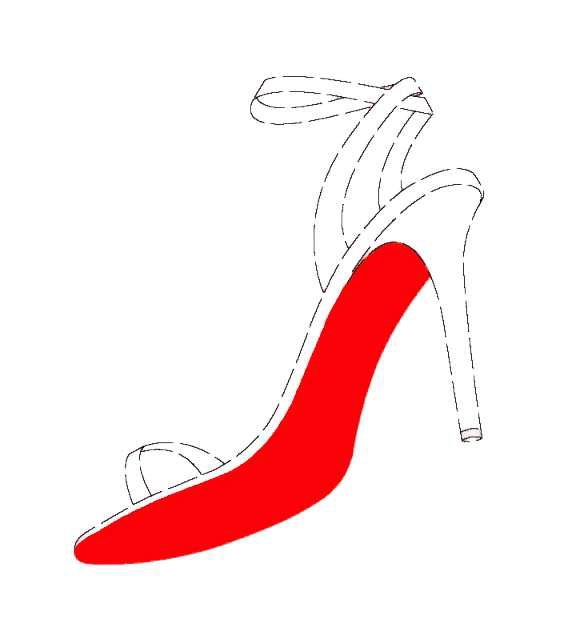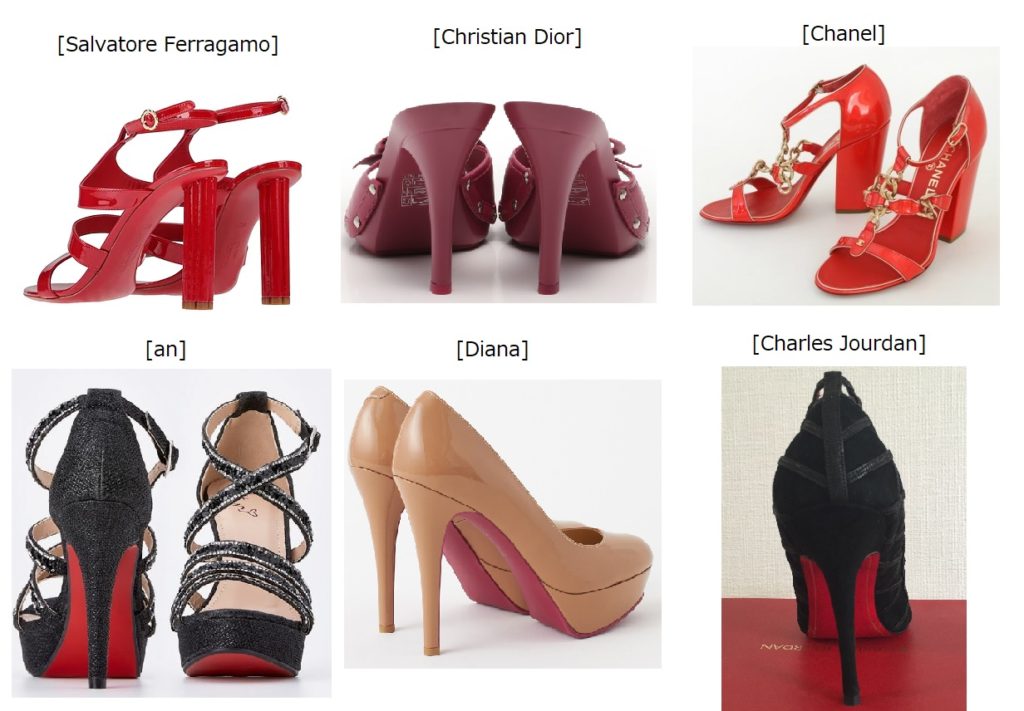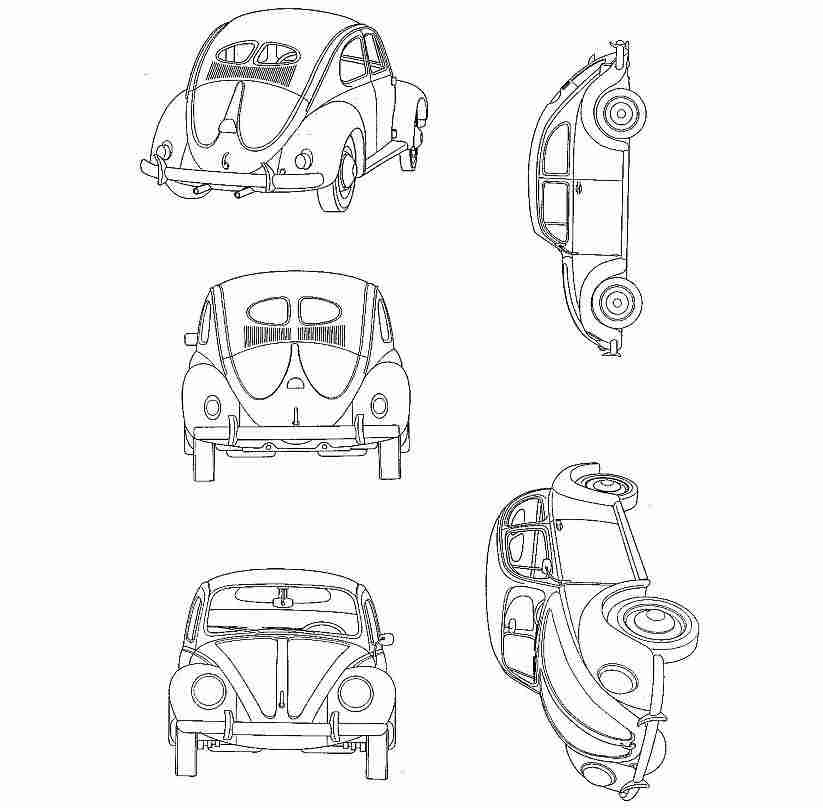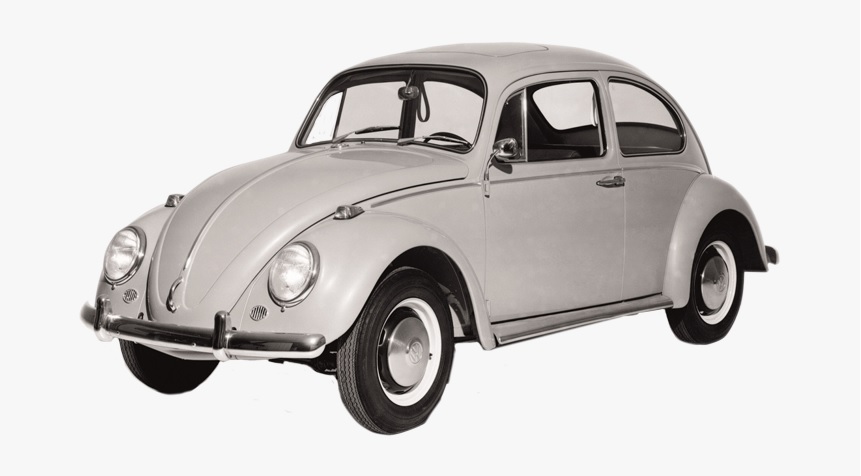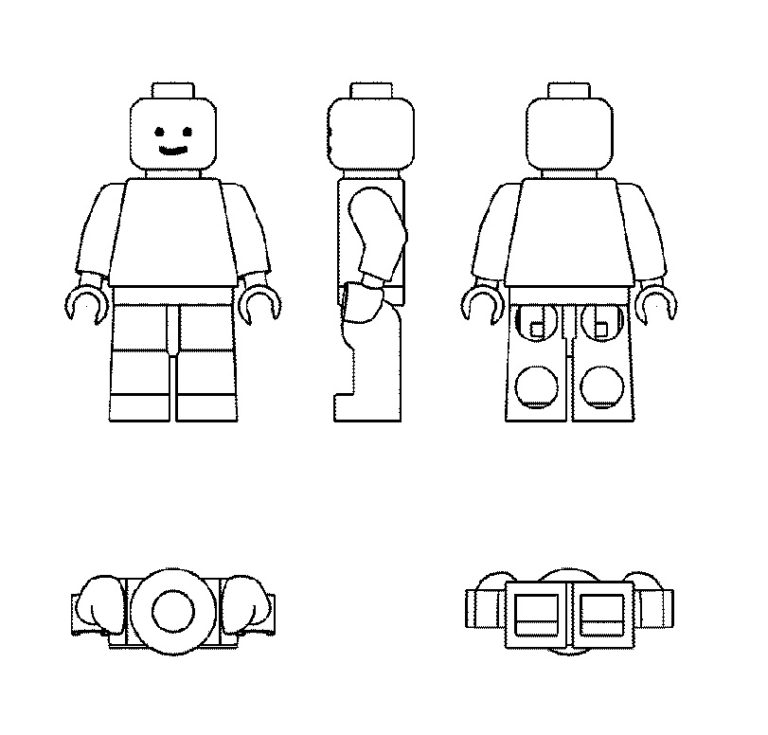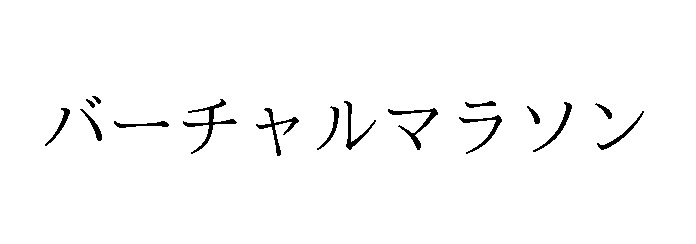The Japan Patent Office (JPO) Appeal Board disaffirmed the examiner’s rejection and granted registration of TM App nos. 2018-133121 and 2018-133123 for a position mark consisting of chevron devices in relation to jackets and pants (trousers) of class 25 by finding inherent distinctiveness of the position marks.
[Appeal case nos. 2022-13211, 2022-13212 decided on December 20, 2023]
Hummel Chevron Position Mark
Hummel Holding AS filed two position marks with the JPO (TM App nos. 2018-133121, 2018-133123) on October 25, 2018. TM App no. 2018-133121 consists of 15 chevron devices positioned in series from shoulder to sleeve (see below left), and designates long-sleeved jackets in class 25. TM App no. 2018-133123 consists of 21 chevron devices positioned in series from waist to hem (see below right), and designates pants and trousers in class 25.
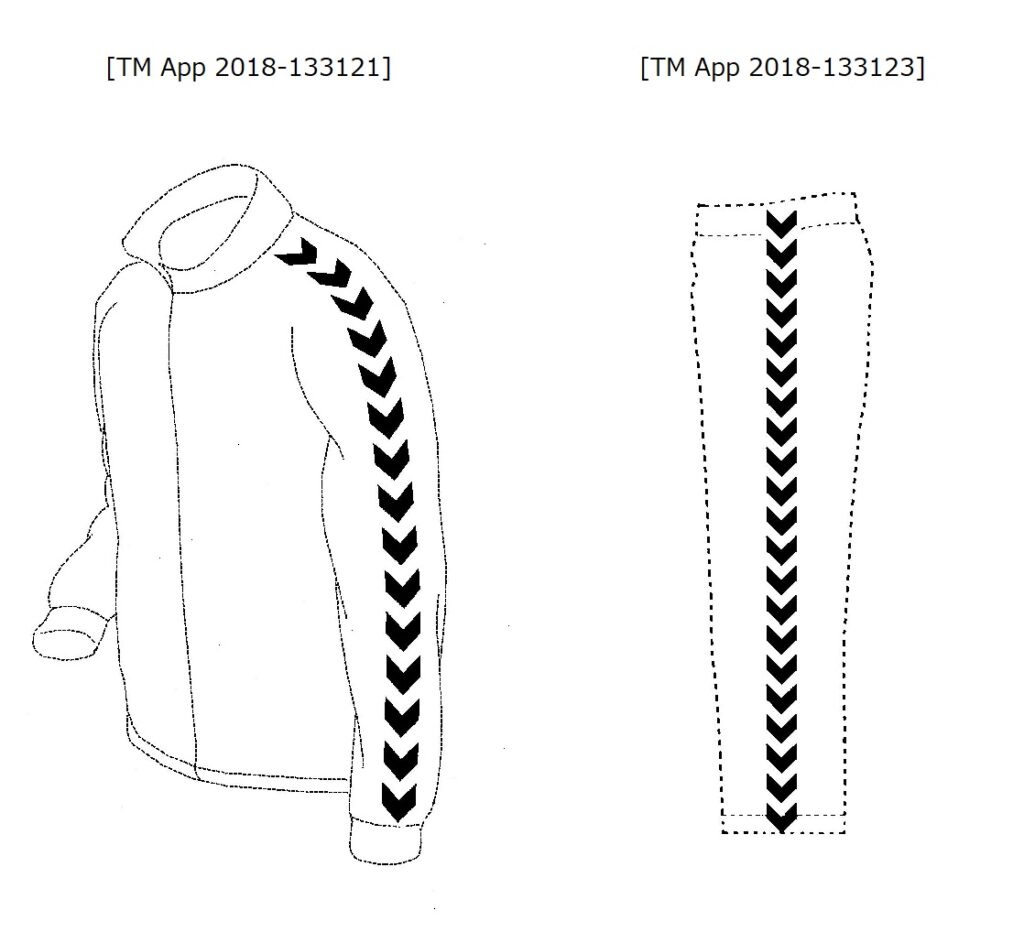
JPO Examination
On May 25, 2022, the JPO examiner rejected both marks based on Article 3(1)(vi) of the Japan Trademark Law by stating that:
In fashion industry, there are plenty of jackets and pants with decorations aiming to enhance aesthetic effect of the goods and attract consumers. Under the circumstances, relevant consumers at the sight of pants or jackets bearing the position mark would not see it as a source indicator, but as a pattern for decorative or functional indication.
Article 3(1)(vi) is a provision to comprehensively prohibit from registering any mark lacking inherent distinctiveness.
Any trademark to be used in connection with goods or services pertaining to the business of an applicant may be registered, unless the trademark:
(vi) is in addition to those listed in each of the preceding items, a trademark by which consumers are not able to recognize the goods or services as those pertaining to a business of a particular person.
Hummel Holding AS filed an appeal against the rejection on August 23, 2022 and argued inherent distinctiveness of the position marks.
JPO Appeal Board decision
The Appeal Board found that respective mark would be far from a common or descriptive device as a whole.
In relevant industries, competitors often provide jackets and pants bearing their brand on the same position with the Hummel Chevron mark. If so, consumers are also accustomed to distinguishing a source of the goods by means of devices depicted on the position.
Bearing in mind that the applicant has been extensively and continuously using the position marks on their jackets and pants, presumably the marks have become famous as a source indicator of the applicant among relevant consumers.
Besides, the Board could not find any evidence of a common use of the chevron device on the same position as a decorative or functional indication.
Based on the foregoing, the Board held that relevant consumers would recognize the position marks as a source indicator. If so, the examiner made an error in finding distinctiveness of respective mark. Therefore, the Board disaffirmed the examiner’s rejection and decided in favor of Hummel Holding AS consequently.

